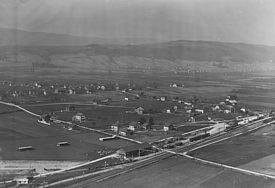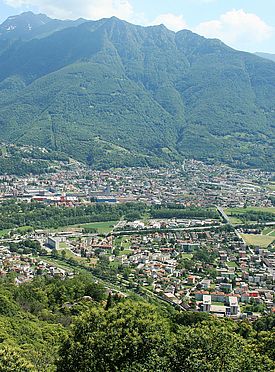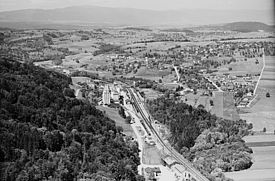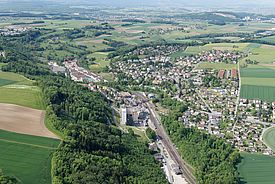01.06.2017 | News
Landscapes play an important role in Switzerland’s quality of life and attractiveness as a location. They remain under considerable pressure: the latest results of the Landscape Monitoring Switzerland programme reveal a continuous deterioration in the quality of the country’s landscapes. Only sporadic improvements can be observed, thanks to the revitalisation of rivers and streams, for example. The results, which were published by the Federal Office for the Environment FOEN and the Swiss Federal Institute for Forest, Snow and Landscape Research WSL on World Environment Day, provide an important basis for the further development of landscape policy.
Switzerland is characterised by the natural and cultural diversity of its landscapes. They are central to the country’s quality of life and well-being and are Switzerland’s calling card when it comes to tourism and the locational competition. To monitor the state and changing of landscapes, the Federal Office for the Environment FOEN and the Swiss Federal Institute WSL have been implementing the Landscape Monitoring Switzerland programme since 2007 (see text box). The monitoring carried out as part of LABES examines not only how landscapes are changing, but also how the population perceives them. The FOEN and WSL published the new LABES Report «Wandel der Landschaft» («Changes in the Landscape») on 1 June 2017.
Strong settlement growth
The report shows that the quality of Switzerland’s landscapes continues to deteriorate. However, the results of the monitoring also reveal that the measures implemented up to now have been effective in part: the deterioration in quality has been slowed down and improvements have been made in individual areas, for example in the revitalisation of rivers and streams.
In general, people in Switzerland like the communes in which they live and feel attached to them. In communes with a high proportion of protected landscapes, the population assesses the landscape quality as particularly high. The inhabitants of Alpine and rural communes perceive their landscapes as more beautiful and more authentic than their counterparts in the urban agglomerations and rapidly growing suburbs.
This perception coincides with the state of the landscapes: in the Central Plateau, for example, the rate of growth in built-up area was twice the national average. Moreover, the Central Plateau is the area that is most fragmented by transport routes and many areas there are sealed. Furthermore, satellite images revealed that the last areas in which the dark sky is not penetrated by light disappeared in the Central Plateau in 1996 and in the Jura region in 2008. Completely dark areas are only found today in the Alpine region.
Challenges for the landscape
The continuing pressure on the landscape in Switzerland makes it clear that the federal authorities, cantons and communes need to intensify efforts to conserve or even improve landscape quality, for example, in the urban agglomerations where compact settlements must be combined with high quality open spaces. In the open landscape, forms of land management that are suited to the regions must be promoted so that the diversity and character of the individual areas are conserved. Improving the quality of living and recreational space that confers a strong cultural identity is a key challenge.
Links and documents
Enclosures
- Report: Landschaftsbeobachtung Schweiz «Wandel der Landschaft» (in German and French)
- Fact sheet: Landscape Monitoring Switzerland: Landscape Quality
Remains under Pressure
Links
- BAFU: state of the landscape – landscape quality (in German, French and Italian)
- The Landscape Research Center WSL
- New approaches in landscape monitoring
Contact
Copyright
Copyright
WSL and SLF provide the artwork for imaging of press articles relating to this media release for free. Transferring and saving the images in image databases and saving of images by third parties is not allowed.



